Best substitute for basmati rice | Selection of rice and non-rice alternatives
If you’re familiar with Indian cuisine, you probably already know about basmati rice.
It’s such a flavorful and versatile grain, perfect for everything from curries to rice pudding.
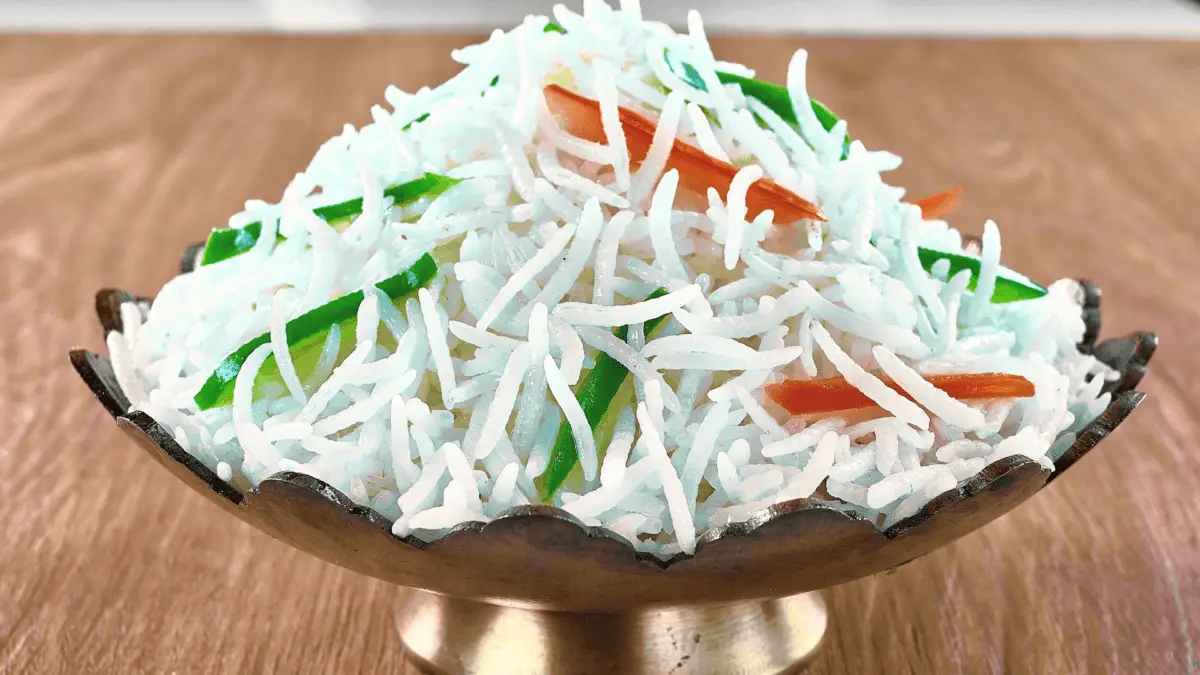
But what if you’re trying to cut down on carbs or simply don’t have any basmati rice on hand?
Never fear, there are plenty of other delicious rice varieties that make great substitutes for basmati.
There are a few good substitutes for basmati rice, depending on what you’re looking for.
If you want rice that is similar in taste and texture, try jasmine rice which is also fragrant and fluffy. For a healthier option, try brown basmati rice. But any long-grain rice will work because it will have a similar long oval shape, size, and a light, non-sticky texture.
Sure, you can use short grain rice too like sushi rice but I’ll share even more options.
Just because you don’t have basmati rice for your recipe doesn’t mean you have to give up on your favorite dish.
Read on for the best substitutes for basmati rice.

Check out our new cookbook
Bitemybun's family recipes with complete meal planner and recipe guide.
Try it out for free with Kindle Unlimited:
Read for freeIn this post we'll cover:
What to look for in a basmati rice substitute?
There are several good substitutes for basmati rice but before I get to them, I want to explain what exactly basmati rice is, what makes it unique, and what to look for in a substitute.
What is basmati rice?
Basmati rice is a long grain, white and aromatic rice. It’s native to the Indian subcontinent and is often used in Indian and Middle Eastern cuisine.
Basmati rice is usually white or brown and has a nutty flavor. The texture of basmati rice is light and fluffy, and the grains are long and slender.
The basmati rice really soaks up the sauces and flavors of dishes like biryani.
What makes basmati rice unique?
What sets basmati rice apart from other types of rice is its aroma.
Basmati means “fragrant” in Hindi, and the rice does indeed have a unique, nutty fragrance.
The flavor of basmati rice is also unique. It’s not as bland as other types of rice, but it’s also not as strong as some other aromatic rice varieties like jasmine rice.
Basmati rice is also unique because it’s one of the few types of rice that actually gets better with age.
Basmati rice that is aged for at least a year has a nuttier flavor and a more refined texture.
Also, basmati rice expands about twice its length when cooked, so the grains are nice and long.
Find out what are the best rice cookers to cook basmati rice to perfection
What to look for in a basmati rice substitute?
When choosing a substitute for basmati rice, there are a few things to keep in mind.
First, you’ll want to choose a type of rice that has a similar texture.
Basmati rice is light and fluffy, so you’ll want to find rice that has a similar texture. Also, the grains don’t really stick together once cooked.
Second, you’ll want to choose rice that has a similar flavor. Basmati rice has a nutty, aromatic flavor, so you’ll want to find rice that has a similar flavor profile.
Third, if you’re looking for the perfect basmati rice substitute, you need something like jasmine rice with a similar grain size.
Best basmati rice substitutes
Basmati rice is used in dishes like curries, rice pudding, and biryani. It’s also traditionally served with Indian food.
Basmati rice is a versatile grain so depending on what you’re cooking, certain substitutes may be better suited than others.
Curries can be served with many rice types and other grain substitutes but some puddings can’t.
Jasmine rice
Jasmine rice is the best basmati rice substitute because it has a similar flavor profile.
It’s slightly sweeter than basmati rice and has a nutty flavor. Some people call it Thai fragrant rice.
Jasmine rice is also light and fluffy, so it has a similar texture to basmati rice. The grains of jasmine rice are also slightly longer than basmati rice, so they have a similar grain size.
But jasmine rice is more fragrant than basmati rice and it can intensify the flavor of your food.
When cooked, jasmine rice releases an intoxicating aroma and you can smell it from a distance, unlike basmati rice.
Aromatically, there is a difference between the two rice varieties. Jasmine rice is sweeter and milder than basmati rice, which has a nutty aroma.
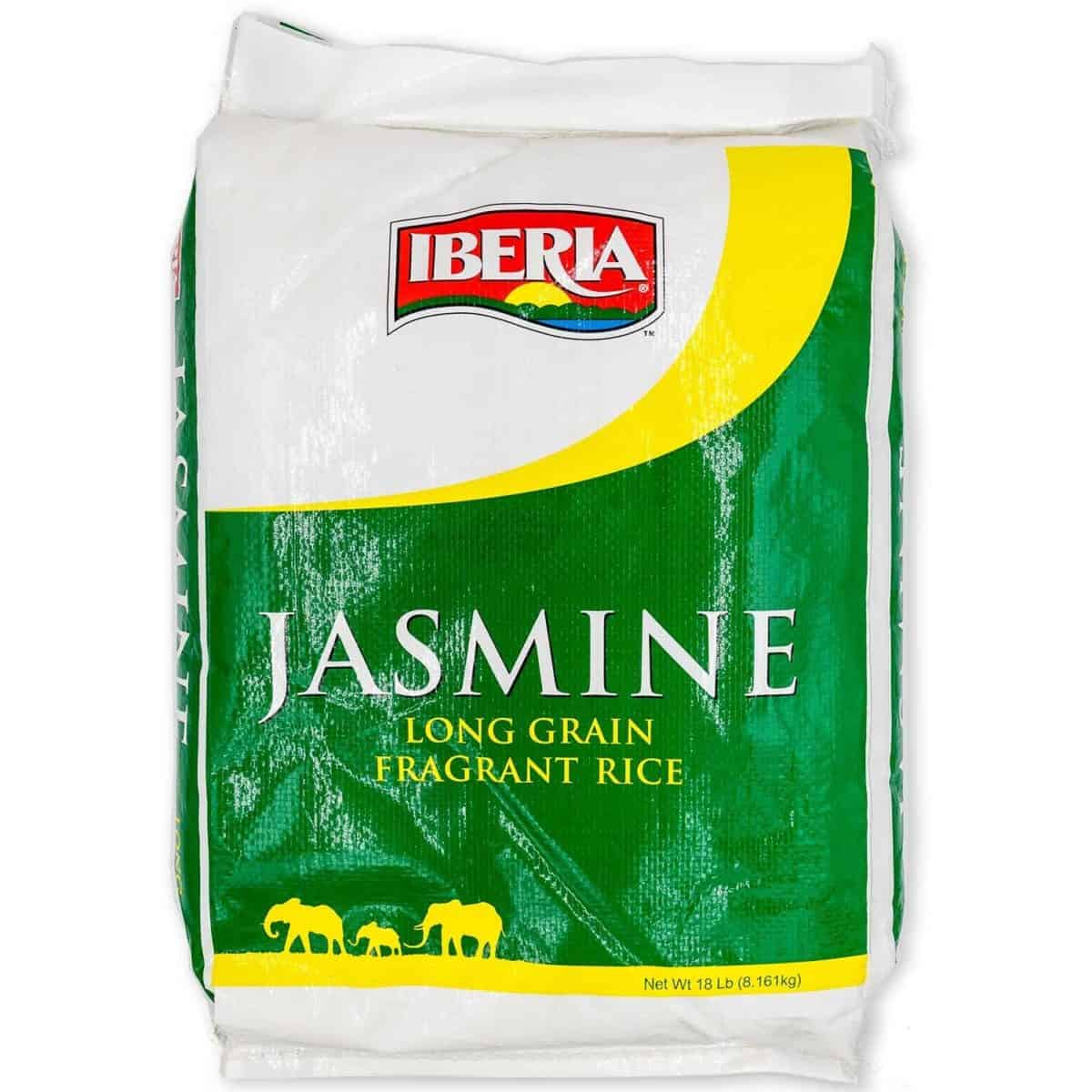
In comparison to basmati rice, jasmine rice has a rounded edge and a whiter appearance than the translucent white color of the latter.
After cooking, jasmine rice does not expand quite as much as basmati rice but still, the size is very similar.
Thailand, a major producer, and exporter of rice is the primary source of jasmine rice.
Among Asian cuisines, jasmine rice is a staple ingredient in Thailand, Indonesia, Malaysia, and Taiwan.
You can use Jasmine rice for all recipes, including curries, pudding, pilaf, fried rice, and more!
When using jasmine rice as a basmati rice substitute, use a 1:1 ratio.
Brown jasmine rice
Similar to white Jasmine rice, brown Jasmine rice is a long-grain rice with a nutty flavor.
As the name suggests, brown Jasmine rice is brown in color because of the bran layers that are left on the rice grain.
The bran layers give the rice a chewy texture and a nutty flavor.
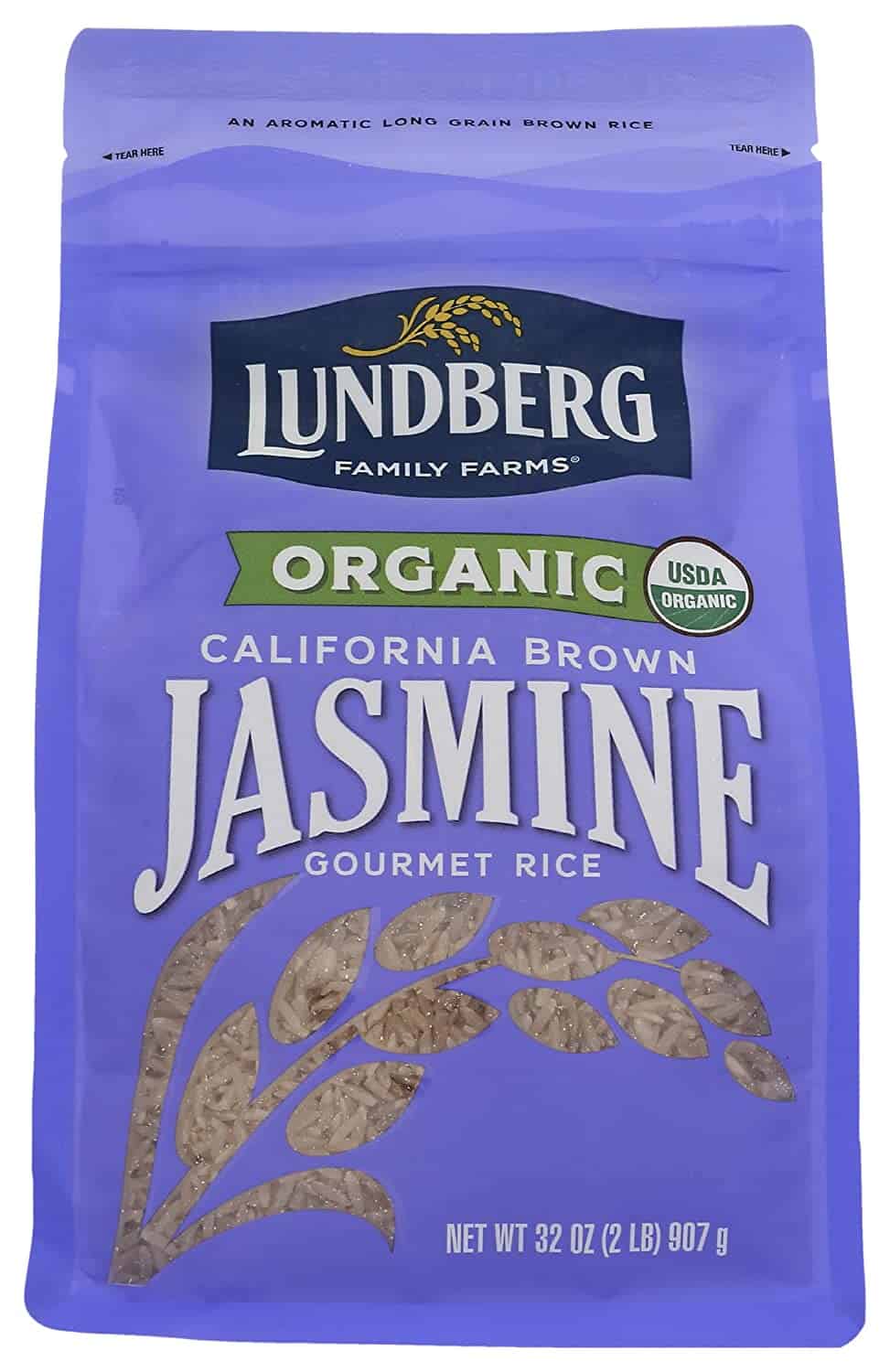
Brown Jasmine rice takes slightly longer to cook than white Jasmine rice and has a stronger flavor.
If you’re looking for a basmati rice substitute that is healthy and has a nutty flavor, brown Jasmine rice is a good choice.
Brown Jasmine rice is healthier than white rice because it has more vitamins and minerals.
It’s also a good source of fiber, which is important for a healthy digestive system.
When using it instead of white basmati rice, use a ratio of 1:1.5 (one cup of brown Jasmine rice for every 1.5 cups of white basmati rice).
Also read: Best saucepan for perfectly cooked rice (Top 5 helpful non-stick tools)
Long-grain white rice
Long grain white rice is very popular in America. It’s the most common type of rice consumed in the US.
Long grain rice, especially white, is a good substitute for basmati rice because it has a similar texture and flavor.
However, the American long-grain rice is not as fragrant and aromatic as the basmati but it still tastes good in dishes like curry or chili.
Since it has a nice chewy texture, it works well in salads too.
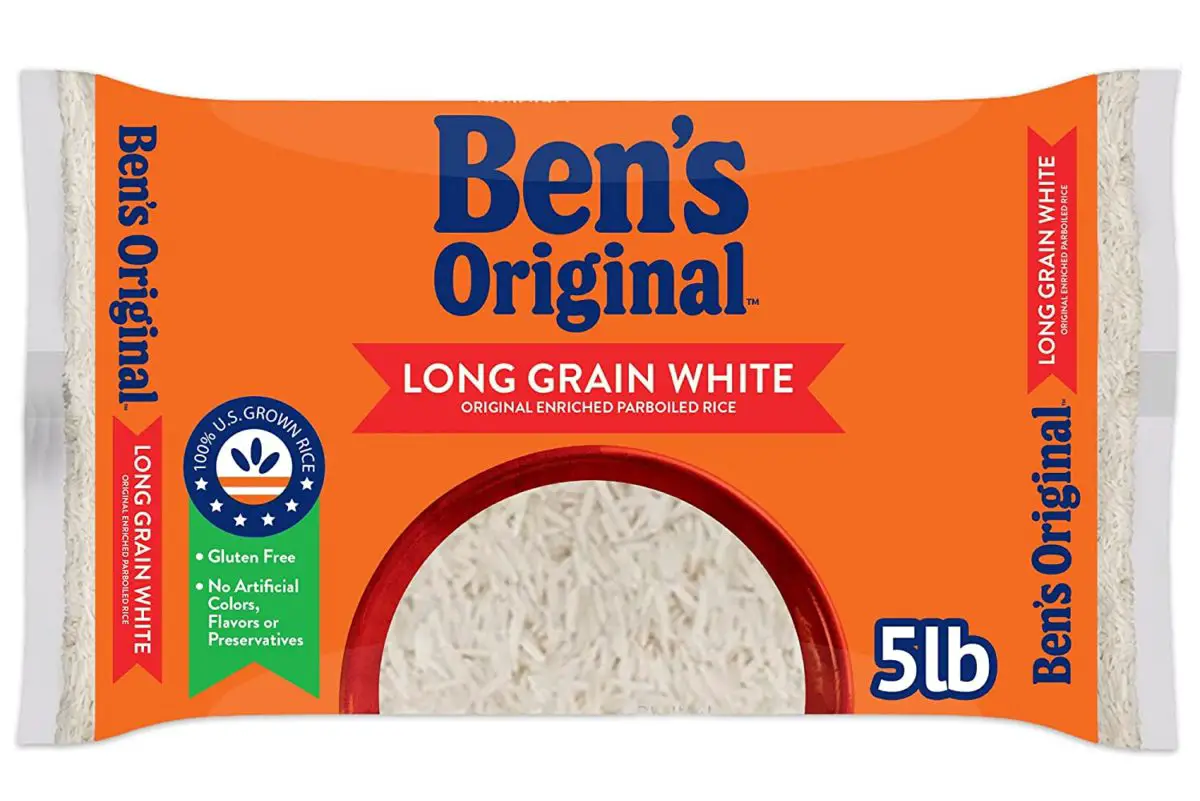
The grains of long-grain white rice are slightly longer than basmati rice, so they have a similar grain size.
This type of rice is used for fried rice, pilaf, and risotto. It’s also used in Asian cuisine and Latin American cuisine.
When using long-grain white rice as a basmati rice substitute, use a 1:1 ratio.
One advantage of using long grain rice to substitute basmati rice is that it’s cheap and widely available at all grocery stores.
Long-grain brown rice
Long-grain brown rice is whole grain rice and it’s a good substitute for basmati rice.
It has a nutty flavor and a chewy texture. The grains of long-grain brown rice are slightly longer than basmati rice and exactly like white long-grain rice.
The only difference is the color because brown rice still has the bran layer.

Brown rice takes slightly longer to cook than white rice and has a stronger flavor.
If you’re looking for a basmati rice substitute that is healthy and has a nutty flavor, brown long-grain rice is a good choice.
You can use this rice in both sweet and savory dishes just be sure it’s cooked properly since it takes a few extra minutes.
Substitute it in a 1:1 ratio when using it as a basmati rice replacement.
Arborio rice
Arborio rice is a short-grain rice that is used in risotto. It’s also known as “Risotto Rice” because of its popularity in the dish.
It gives off a lot of starch when cooked. While it’s not the top basmati substitute, it can be used as a replacement in some dishes.

The grains of Arborio rice are shorter and fatter than basmati rice grains.
Arborio rice is a good substitute for basmati rice because it has a similar texture and flavor. It is also nutty and chewy.
Arborio rice is a good choice for risotto, paella, and other dishes where you want a creamy texture.
The short and fat grains of Arborio rice absorb liquids quickly and they become very soft. This is why it’s used in dishes where you want a creamy texture. It’s good for biryani too.
When using Arborio rice as a basmati rice substitute, use a 1:1 ratio.
One advantage of using Arborio rice is that it’s readily available.
Have you ever tried making Japanese-style risotto with delicate uni?
Popcorn rice
Did you know that there is American basmati rice?
Well, it’s a hybrid of basmati and long-grain rice. Louisiana Popcorn rice is a good substitute for basmati rice.
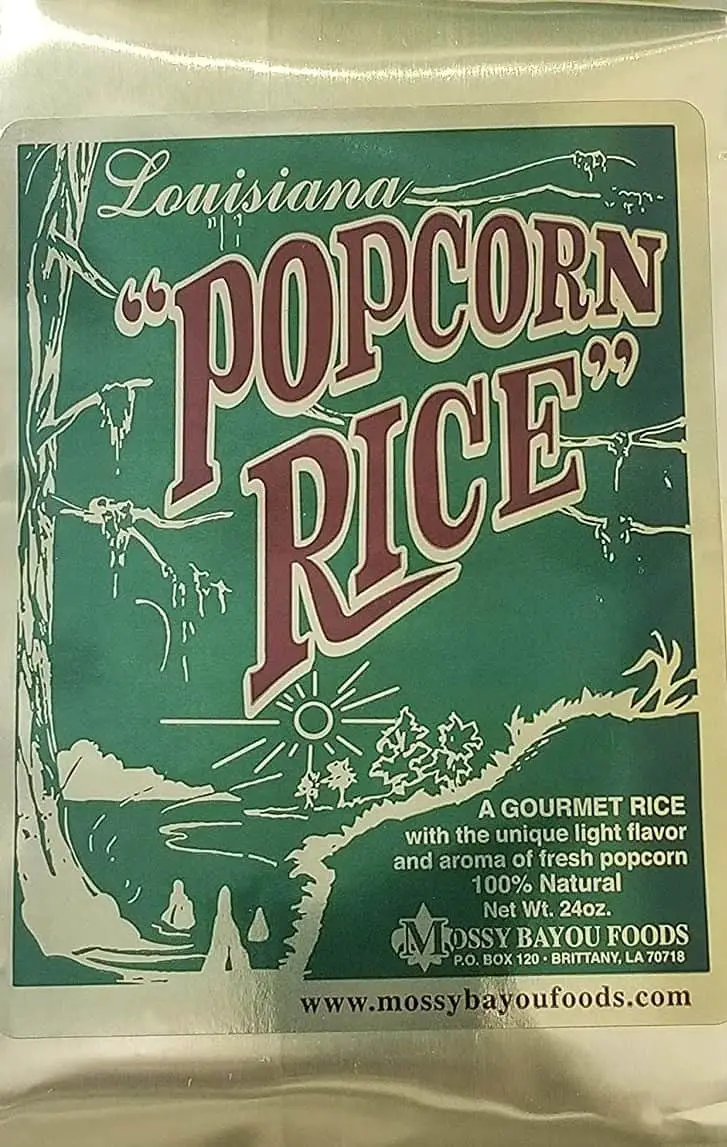
There are a few similar popcorn rice varieties in the US, including texmati rice and kasmati rice.
It’s a long-grain rice that has a milder nutty flavor that doesn’t overpower your dish.
It’s called popcorn rice because the taste is somewhat similar to popcorn so it’s rich and delicious. The texture is similar to basmati rice and it has a fluffy texture.
Popcorn rice is a good choice for those who want to add a nutty flavor to their dish without it being overwhelming.
Therefore, popcorn rice is a great substitute in most savory dishes.
The grains of this rice variety do not stick together when cooked, similar to basmati.
Use a 1:1 ratio when substituting basmati rice for popcorn rice.
Cauliflower rice: best for low-carb and keto
Ok, so cauliflower rice is not actually a rice grain. It’s a vegetable that is made to resemble rice.
It has a similar texture to rice and it’s a good choice for those who are on a low-carb or keto diet.

Cauliflower rice is made by grating cauliflower florets into small pieces using a food processor. This “rice” has a slightly sweet flavor and a crunchy texture.
It’s a good choice for stir-fries, curries, and fried rice dishes. You can also use it as a rice replacement in sushi.
Since it’s purely vegetable, it’s very low in carbs and calories. This makes cauliflower rice healthy, and gluten-free.
It won’t make you feel bloated or full as this is a light meal option.
Rice has a dense texture compared to cauliflower rice. Thus it works in both hot and cold dishes.
When cooking cauliflower rice, add more water or broth to prevent it from drying out. It’s best to cook it in a skillet over medium heat for about 5 minutes.
Thus this “rice” has a short cooking time compared to rice and the cooking method is different since it’s simmered for short periods.
Use a 1:1 ratio when substituting rice for cauliflower rice.
Couscous
Couscous is a type of pasta that is made from semolina wheat. In North Africa, it’s traditionally made from durum wheat.
It’s a popular ingredient in Moroccan and middle eastern cooking. Couscous has a bland flavor and a slightly chewy texture.
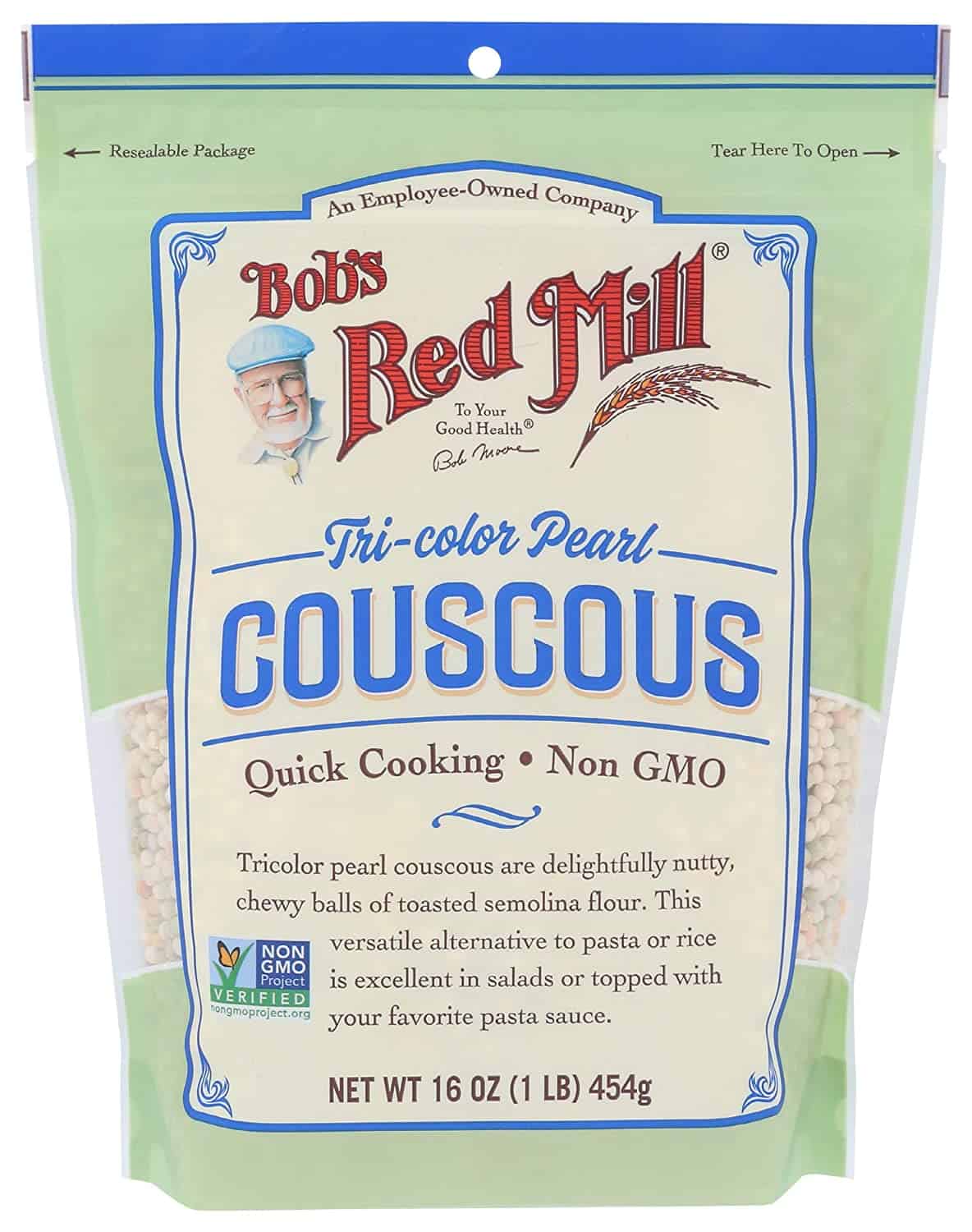
Therefore, it’s best to combine couscous with flavorful sauces to achieve a good tasty meal.
The couscous pasta grains are about the same size as rice grains. They absorb a lot of liquid, just like regular rice.
Therefore couscous is one of the best basmati rice substitutes that people tend to overlook!
Couscous can be used as a basmati rice substitute in most dishes.
When substituting couscous for basmati rice, use a 1:1 ratio in most cases but couscous expands when cooked so it’s best to start with less than you think you’ll need if you’re unsure.
Quinoa
Quinoa is a pseudo-grain that’s popular in the health food scene. It’s a gluten-free grain that’s high in protein and fiber.
It has a nutty flavor and a slightly chewy texture. Quinoa is available in white, red, and black varieties.
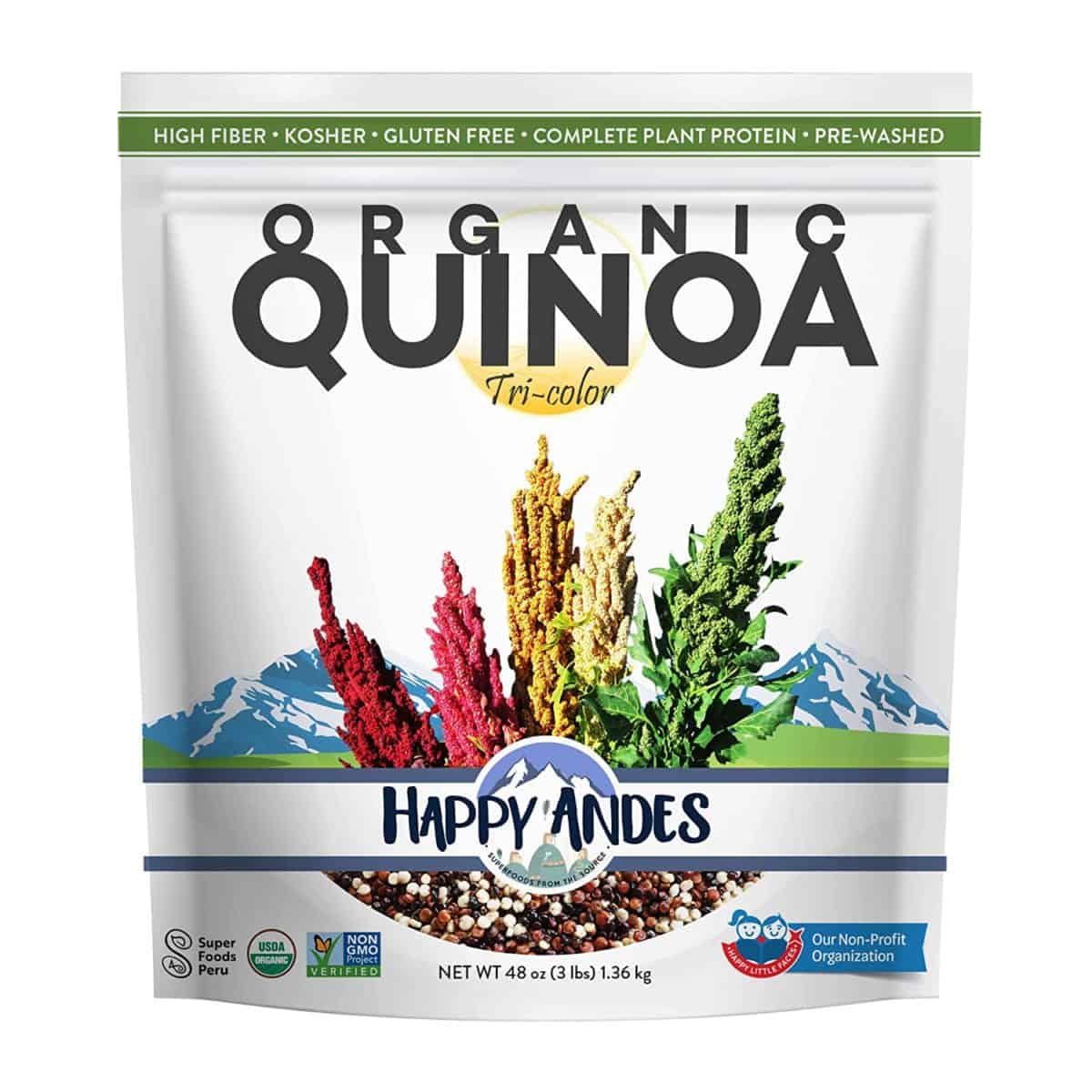
You can use any of them as basmati rice substitutes but your dish will have a different color.
The white variety has a milder flavor while the red and black varieties have a nuttier flavor.
Quinoa is one of the healthiest grains that you can eat. It’s a good choice for those who are on a gluten-free or vegan diet.
To cook quinoa, rinse it in a fine-mesh strainer first to remove the saponins. This will also help to improve the flavor.
Then, add quinoa to a pot of boiling water or broth. The ratio is 1 part quinoa to 2 parts liquid. Bring it to a boil then reduce the heat and simmer for about 15 minutes.
After cooking, fluff quinoa with a fork then let it sit for 5 minutes to absorb the flavors.
Use a 1:1 ratio when substituting basmati rice for quinoa.
Find more great rice substitutes here in my top list of rice alternatives
Bulgur wheat
Bulgur wheat is a type of whole wheat that’s been parboiled, then dried. It’s a popular ingredient in Middle Eastern cuisine.
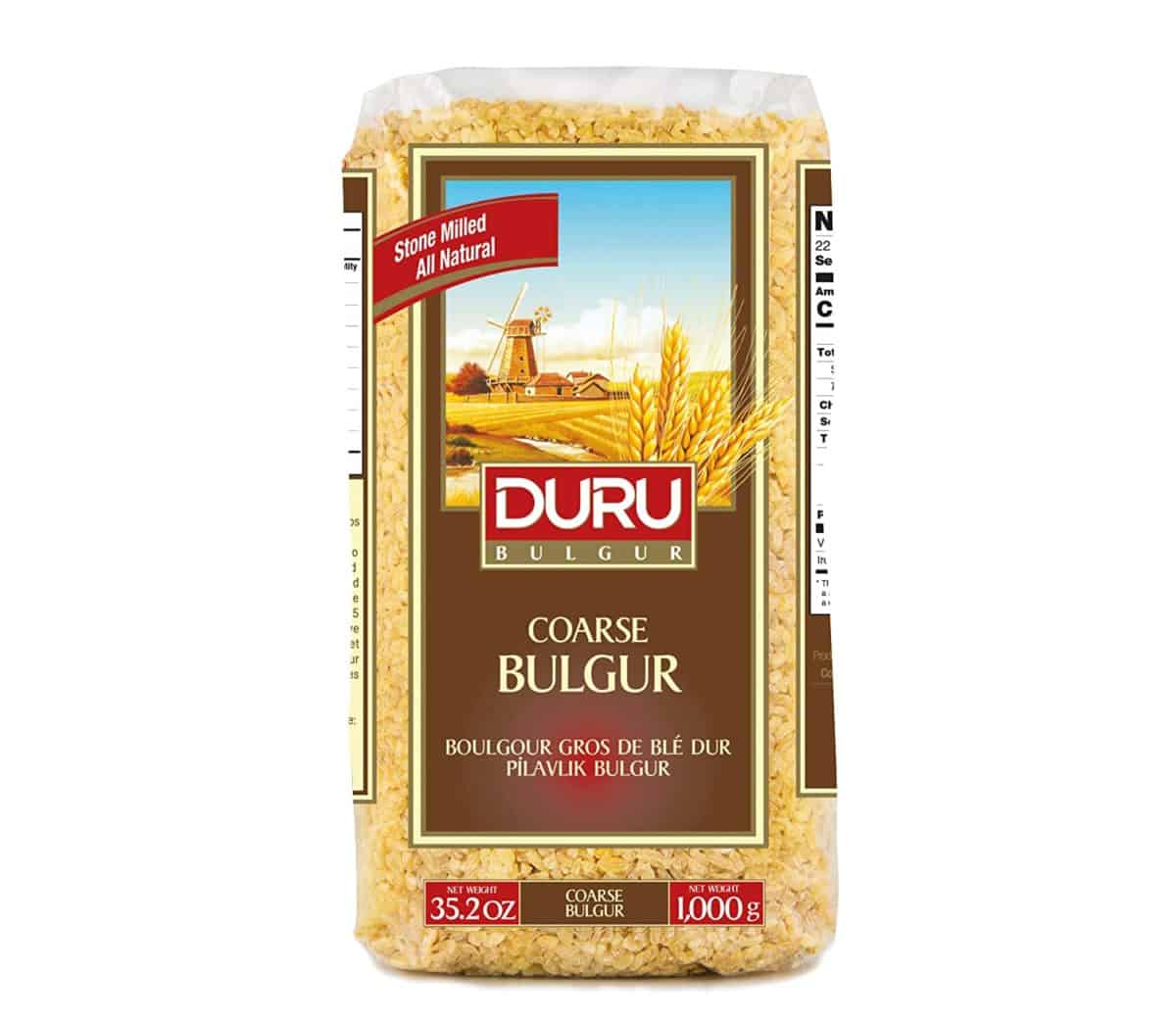
It takes longer to cook than basmati rice but the cooking time is shorter than most other grains.
Bulgur wheat has a light nutty flavor and a slightly chewy texture. It’s a good choice for those who are on a gluten-free diet.
To cook bulgur wheat, bring 2 cups of water to a boil then add 1 cup of bulgur wheat. Turn off the heat then cover the pot and let it sit for about 30 minutes.
The texture of bulgur wheat will be slightly crunchy after cooking. If you want it to be softer, add more water and cook for a longer time. It can be used instead of basmati for salads, curry, and soup.
Use a 1:1 ratio when substituting basmati rice for bulgur wheat.
Orzo
Orzo is a type of pasta that’s shaped like rice. It’s a popular ingredient in Italian and Greek cuisine.
It has a mild flavor and a slightly chewy texture.
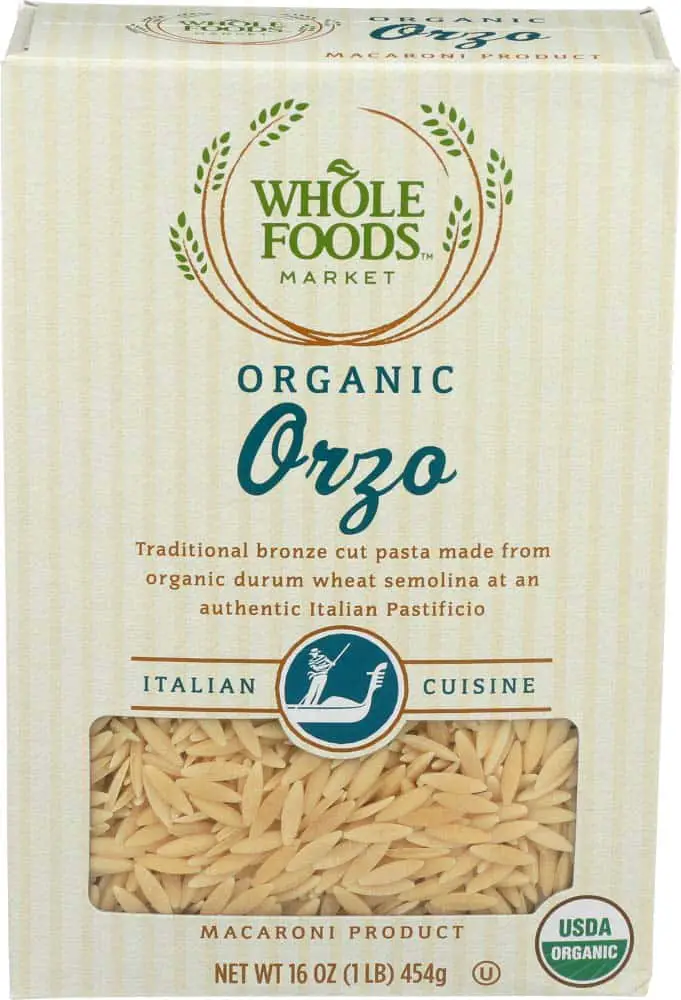
Orzo is best cooked in broth to give it more flavor. The cooking time is about 10 minutes.
Orzo can be used in place of basmati rice in most dishes. Use a 1/3:1 ratio when substituting orzo for basmati rice.
This means you should use 1/3 cup of orzo for every 1 cup of basmati because orzo is a larger pasta and it expands a lot.
But also, orzo is high in calories compared to basmati so it should be used in moderation.
This substitute isn’t ideal for making dishes like Teppanyaki fried rice because the pasta gets mushy and sticks together.
FAQs
Does jasmine rice and basmati cook the same?
Jasmine rice and basmati rice have similar cooking times but jasmine rice has a softer texture.
Before you cook jasmine rice, be sure to rinse it a few times to remove any impurities.
Then, add 1 part jasmine rice to 2 parts water. Bring it to a boil then reduce the heat and simmer for about 20 minutes.
Jasmine rice has a softer texture than basmati rice. It’s also less sticky so it’s a good choice for making fried rice.
The cooking time and ratio are the same for both jasmine and basmati rice.
Is brown rice the same as basmati?
No, brown rice is not the same as basmati. Basmati rice is a type of long-grain rice that’s grown in South East Asia.
Brown rice is whole grain rice that’s darker in color because it still has the bran and germ attached.
Basmati rice has a nutty flavor while brown rice has a more earthy flavor.
Basmati rice is typically used in Indian and Pakistani cuisine while brown rice is used in Chinese and Thai cuisine.
The cooking time for basmati rice is about 20 minutes while the cooking time for brown rice is about 40 minutes.
What is special about basmati rice?
First of all, the taste is really great because it’s fragrant, lightly nutty, and aromatic. Basmati rice is also long grain rice so it’s less sticky than other types of rice.
Also, basmati rice expands a lot when cooked so it’s perfect for dishes like fried rice and pilaf.
Basmati rice is a bit more expensive than other types of rice.
What is the difference between basmati and non-basmati rice?
Basmati rice is a type of long-grain rice that’s grown in South East Asia and there are new hybrid varieties growing in America too.
Non-basmati rice is any type of rice that’s not basmati. Usually, you can tell the difference because basmati is long-grain rice and short-grain rice is non-basmati.
Basmati rice has a nutty flavor while non-basmati rice has more neutral bland aromas.
Takeaway
As you can tell, there are many great substitutes for basmati rice. It all comes down to your personal preferences.
Do you want a grain that’s similar in texture to basmati rice? Or are you looking for a healthier alternative?
Jasmine rice is the top option because it’s fragrant and has an almost identical texture when cooked.
Other long-grain rice varieties are great alternatives for basmati too and they have similar flavors.
Whichever grain you choose, make sure to follow the cooking instructions properly. This will ensure that your dish turns out great!
Read next, the 22 best sauces for rice [you need to try hot sauce no. 16!]
Check out our new cookbook
Bitemybun's family recipes with complete meal planner and recipe guide.
Try it out for free with Kindle Unlimited:
Read for freeJoost Nusselder, the founder of Bite My Bun is a content marketer, dad and loves trying out new food with Japanese food at the heart of his passion, and together with his team he's been creating in-depth blog articles since 2016 to help loyal readers with recipes and cooking tips.
